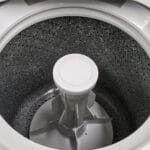A Rheem pool heater keeps your pool at the perfect temperature. But what happens when it stops working?
Troubleshooting your Rheem pool heater can seem daunting, but it doesn’t have to be. Pool heaters are essential for maintaining a comfortable swimming environment. When they malfunction, it can quickly disrupt your pool time. Understanding common issues and how to fix them can save you both time and money.
This guide will walk you through basic troubleshooting steps for Rheem pool heaters. From identifying error codes to checking the gas supply, you’ll learn how to address common problems. Get ready to dive into a pool that stays warm and inviting, even when issues arise. Let’s make pool heater troubleshooting simple and stress-free.

Credit: poolandspasupplystore.com
Common Issues
Rheem pool heaters are reliable, but they can encounter problems. Knowing common issues helps in quick troubleshooting. Let’s dive into some frequent problems and solutions.
Heater Not Turning On
First, check the power supply. Ensure the heater is plugged in properly. Inspect the circuit breaker and reset it if needed. Examine the thermostat settings. Make sure they are correct. Inspect the safety switches. Sometimes, these switches get tripped. Finally, check for error codes on the display panel. They can guide you to specific issues.
Insufficient Heating
Start by checking the filter. A dirty filter reduces water flow. Clean or replace it. Verify the thermostat settings. They should be set to the desired temperature. Inspect the gas supply. Ensure the gas valve is open. Check for blockages in the gas line. Examine the water flow rate. Low flow can cause poor heating. Adjust the flow rate if needed. Finally, inspect the heat exchanger. It should be clean and free from debris.

Credit: www.youtube.com
Diagnostic Tools
Rheem pool heaters are reliable, but sometimes issues arise. Knowing the right diagnostic tools is essential. These tools help identify and fix problems quickly. Below, we discuss the two main tools: multimeters and error code checkers.
Multimeter Usage
A multimeter measures electrical values. It’s vital for troubleshooting pool heaters. Here’s how to use it:
- Voltage Check: Ensure the heater is getting power. Set the multimeter to AC voltage. Connect the probes to the power terminals. The reading should match the heater’s voltage rating.
- Continuity Test: Check if electrical paths are complete. Set the multimeter to continuity mode. Connect probes to the circuit. A beep or zero reading indicates a complete path.
- Resistance Measurement: Test heater elements. Set the multimeter to resistance (ohms). Connect probes to the element terminals. Compare the reading with the manufacturer’s specifications.
Checking Error Codes
Rheem pool heaters have error codes to diagnose problems. Understanding these codes is crucial. Here are common codes and their meanings:
| Error Code | Description | Solution |
|---|---|---|
| EO | Thermostat issue | Check and replace the thermostat |
| CF | Control fault | Inspect control board; replace if faulty |
| HI | High temperature | Check temperature sensor; ensure proper airflow |
| LO | Low temperature | Ensure water flow; check temperature settings |
Use the heater’s manual to find all error codes. Each code points to a specific problem. This saves time and effort during repairs.
Basic Checks
If your Rheem pool heater is not working properly, start with basic checks. These simple steps can often resolve common issues. Ensuring these elements are correct can save time and effort.
Power Supply
The first step in troubleshooting your Rheem pool heater is checking the power supply. Verify the heater is plugged in and the outlet works. Check for tripped breakers or blown fuses in your electrical panel. Make sure the power switch on the heater is turned on.
If the unit doesn’t turn on, inspect the power cord for damage. Look for any visible cuts or frays. If you find any, replace the cord immediately. Ensure all connections are tight and secure.
Thermostat Settings
Incorrect thermostat settings can prevent the heater from functioning. Check the thermostat to ensure it is set to the desired temperature. If the setting is too low, the heater won’t turn on.
Adjust the thermostat to a higher temperature and wait a few minutes. Observe if the heater activates. If it doesn’t, the thermostat might be faulty. Consider replacing it if needed.
| Check | Description |
|---|---|
| Power Supply | Verify the heater is plugged in and the outlet works. |
| Thermostat Settings | Ensure the thermostat is set to the desired temperature. |
By performing these basic checks, you can often resolve common issues with your Rheem pool heater. If problems persist, further troubleshooting or professional assistance may be required.
Water Flow Problems
Experiencing water flow problems with your Rheem pool heater can be frustrating. These issues can prevent your heater from working efficiently. Two common causes for water flow problems are filter blockages and pump malfunctions. Let’s delve into these problems and how to troubleshoot them.
Filter Blockages
Filter blockages can significantly hinder water flow. A clogged filter restricts the water from passing through. This causes the heater to work harder. Over time, this can lead to more serious issues.
To check for filter blockages:
- Turn off the pool heater.
- Remove the filter from its housing.
- Inspect the filter for debris and dirt.
- Clean the filter using a hose or replace it if necessary.
A clean filter ensures proper water flow. This helps maintain the efficiency of your Rheem pool heater.
Pump Malfunctions
Pump malfunctions can also disrupt water flow. If the pump is not working correctly, it can cause insufficient water pressure. This, in turn, affects the heater’s performance.
To identify pump malfunctions:
- Check if the pump is making unusual noises.
- Inspect the pump for leaks or visible damage.
- Ensure the pump is receiving power.
- Examine the pump basket for debris.
If you notice any issues, you might need to repair or replace the pump. Regular maintenance can prevent pump malfunctions and ensure smooth water flow.
Addressing these common water flow problems can help keep your Rheem pool heater in top condition. This ensures you have a warm and enjoyable swimming experience.
Gas Supply Issues
Gas supply problems can significantly impact your Rheem pool heater’s performance. Identifying and resolving these issues ensures your pool stays warm and inviting. Let’s explore two key areas to inspect: the gas valve and the burner.
Gas Valve Inspection
The gas valve controls the flow of gas to the heater. First, ensure the gas valve is in the “on” position. If it’s off, the heater won’t ignite. Check for any visible damage or wear on the valve. Damaged valves can cause gas flow problems.
Listen for any unusual sounds. Hissing noises may indicate a gas leak. If you suspect a leak, turn off the gas and contact a professional immediately. Regularly inspect the gas valve to ensure it operates smoothly.
Burner Cleanliness
Burners can accumulate dirt and debris over time. This buildup can block the gas flow and affect the heater’s performance. Inspect the burners for any visible dirt or debris. Clean the burners using a soft brush or compressed air.
Ensure the burner ports are clear. Blocked ports can cause uneven heating or no heating at all. Regular cleaning helps maintain efficient burner operation. Keeping burners clean ensures your pool heater works effectively.
Electrical Component Failures
Dealing with a Rheem pool heater can sometimes be frustrating, especially when facing electrical component failures. These issues can cause your heater to malfunction, leading to cold and unusable water. Understanding and addressing these problems is crucial for maintaining a comfortable swimming environment. Let’s delve into two common electrical component failures: fuse replacements and circuit breaker resets.
Fuse Replacement
Fuses protect your pool heater’s electrical components from damage. If a fuse blows, it cuts off the electrical supply to the heater. Replacing a blown fuse is a straightforward task. Here’s a simple guide:
- Turn off the heater and disconnect it from the power source.
- Locate the fuse box. This is usually near the control panel.
- Identify the blown fuse. It will appear dark or cloudy.
- Remove the blown fuse using a fuse puller or a similar tool.
- Insert a new fuse of the same type and rating.
- Reconnect the power and turn on the heater.
Make sure to use the correct fuse type. Using the wrong fuse can cause further issues.
Circuit Breaker Reset
Sometimes, a tripped circuit breaker can interrupt your pool heater’s operation. Resetting the circuit breaker can often resolve the issue. Follow these steps:
- Locate the circuit breaker panel. This is usually in a utility room or garage.
- Find the breaker labeled for the pool heater. It will be in the “off” position.
- Switch the breaker to the “off” position, then back to the “on” position.
- Check if the heater powers on. If not, there may be another issue.
Regularly inspect your circuit breakers. Frequent tripping can indicate underlying electrical problems.
By understanding these common electrical component issues, you can keep your Rheem pool heater running smoothly and avoid unexpected cold dips.
Sensor Malfunctions
Sensor malfunctions in Rheem pool heaters can disrupt your pool’s heating efficiency. The temperature and pressure sensors are key components to monitor. Proper troubleshooting ensures your pool remains at the desired temperature. Below, we will discuss the common issues and solutions for these sensors.
Temperature Sensor
The temperature sensor ensures your pool heater maintains the correct temperature. If this sensor malfunctions, it can lead to inaccurate temperature readings or even a complete system shutdown.
- Check for loose connections.
- Inspect the sensor for dirt or debris.
- Use a multimeter to test sensor resistance.
If the sensor shows irregular readings, it may need replacing. Refer to your user manual for specific instructions on replacement. Always ensure the heater is off before performing any maintenance.
Pressure Sensor
The pressure sensor monitors the water flow through the heater. A malfunctioning pressure sensor can prevent the heater from starting or cause it to shut down unexpectedly.
| Issue | Possible Cause | Solution |
|---|---|---|
| Heater won’t start | Low water flow | Check pump and filters |
| Erratic shutdowns | Sensor blockage | Clean the sensor |
Regularly inspect the pressure sensor to ensure it is free from blockages. If cleaning does not resolve the issue, consider replacing the sensor. Follow the user manual for safe and proper replacement procedures.

Credit: www.youtube.com
Preventive Maintenance
Regular preventive maintenance keeps your Rheem pool heater running smoothly. It helps avoid unexpected issues and extends the unit’s lifespan. Let’s explore two key maintenance tasks: regular cleaning and seasonal check-ups.
Regular Cleaning
Regular cleaning is crucial for a Rheem pool heater. A clean unit operates more efficiently and prevents dirt buildup.
- Inspect the heater’s exterior for debris.
- Remove leaves, dust, and other particles.
- Check the air vents. Clean them with a brush or vacuum.
Also, clean the heat exchanger. Follow these steps:
- Turn off the heater and let it cool.
- Remove the front panel.
- Use a soft brush to clean the exchanger.
- Reassemble the unit.
Performing these tasks monthly helps maintain efficiency.
Seasonal Check-ups
Seasonal check-ups are necessary for optimal performance. Schedule these at the start and end of each season.
| Task | Frequency |
|---|---|
| Inspect electrical connections | Seasonal |
| Test the thermostat | Seasonal |
| Check for leaks | Seasonal |
Ensure all connections are tight. Test the thermostat’s accuracy. Look for water leaks around the unit.
These steps prevent major problems and ensure your Rheem pool heater runs efficiently all year.
Frequently Asked Questions
Why Is My Rheem Pool Heater Not Turning On?
A common cause is a tripped circuit breaker. Check the breaker and reset if necessary.
How Do I Reset My Rheem Pool Heater?
Turn off the power, wait 5 minutes, then turn it back on. Simple reset.
What Does A Flashing Error Code Mean?
It indicates an issue. Refer to the manual for specific error code meanings.
Why Is My Rheem Pool Heater Making Loud Noises?
Loud noises often mean debris in the system. Clean the filter and check for blockages.
How Can I Improve My Rheem Pool Heater’s Efficiency?
Regular maintenance is key. Clean filters, inspect parts, and follow the user manual tips.
Conclusion
Troubleshooting your Rheem pool heater can be simple with the right steps. Identify common issues like error codes or heating problems. Check connections and settings regularly. Regular maintenance helps avoid bigger problems. Consult the manual for specific guidance. Don’t hesitate to call a professional if needed.
Ensuring your pool heater functions properly means more enjoyable swim time. Stay proactive and keep your pool warm and inviting. Happy swimming!




